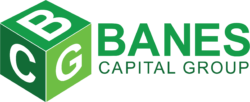The Kermitian Theorem
There have been many times in the past where I would see in a dream what I might write given the news floating around as I hit the hay. Sometimes this stuff follows you to bed. This past week turned humorous as Kermit the Frog appeared as an apologist for the administration with the case that ‘it’s not easy being green.’
I grew up in a non–green era where there was a cloud of smog over U.S. cities. People didn’t recycle and a few thought that throwing trash on the highway was acceptable behavior. We made great progress over the years despite being vilified for not being completely green. For that, you would have to walk or row everywhere and recycle everything. America has made great strides and is far from being one of the world’s worst offenders.
Quick Links
The administration said high prices are good because they force acceptance of the green agenda. The energy advisor said limiting oil usage would “accelerate the transition.” However, the ‘how green is enough?’ debate is not winnable.
The administration took initiatives out of the gate to cancel pipelines and created hardships for new drilling and oil leases. These steps limited supply and fuel shot higher. Delivery charges elevated inflation across the board. These are problems that will not be solved by the Fed raising rates. While the Fed may drive the economy into a recession – which would slow prices from the point of less prosperity, higher rates are driving other inflationary elements upward. With higher mortgage rates, the homebuyer affordability index has plunged to a record low. Home purchase applications just fell to a 2–year low and mortgage applications dropped to their lowest level since February 2000!
It’s also puzzling that some of our recently–released strategic reserves were sold to foreign competition – which does nothing to lower domestic costs (as was the argument for their release). The latest moves by the White House have been to encourage the Saudis and others to produce more oil for our consumption. While that would help to lower costs, the Saudis were not willing to step up production to any magnitude at this time. How does seeking to get other countries to be less green for our benefit help the overall cause? Kermit was indeed right. It’s not easy!
Looking Ahead
- Equity cycles show stocks improving from a low due in the window of July 22nd–25th.
- The bond–yield cycles show rates dropping from a high near July 27th through a low near August 2nd.
- The FOMC will update their interest–rate stance Wednesday July 27th at 2 m. ET. Expect another 75 bps.
The Mini-R is Here
Q1 GDP growth was negative, with a contraction of 1.6%. Q2 is running in that same track with the Atlanta Fed’s GDP–Now model currently projecting another 1.6% loss. While not overly negative, they collectively meet the recession definition of back–to–back quarters of negative GDP growth. With really–slow growth and high inflation, the current economic condition could be described as stagflation – especially if unemployment begins to rise.
The Fed’s Beige Book of the outlooks for their 12 districts said: “Economic activity expanded at a modest pace, on balance, since mid–May.” The concern came in the rest of the highlights. They said: “However, several Districts reported growing signs of a slowdown in demand, and contacts in 5 Districts noted concerns over an increased risk of a recession.” Continuing issues that spoke to some contraction read: “Most Districts reported that consumer spending moderated as higher food and gas prices diminished households’ discretionary income.” As we already pointed out, they commented that: “Housing demand weakened noticeably as growing concerns about affordability contributed to non–seasonal declines in sales.”
While a few FOMC members had said a 100–bps hike was possible at next week’s (July 27th) meeting, enough others said 75 bps was more probable for the Bond Market Review to lean in that direction. Having dissented to the June vote in preferring a lesser 50–bps hike, FRB Kansas City President Esther George said it was more consequential to communicate the path for interest rates. We agree with her contention that: “Moving interest rates too fast raises the prospect of oversteering.” She also spoke to the strains that existing hikes could mean to the economy and financial markets. She said: “Along these lines, I find it remarkable that just four months after beginning to raise rates, there is growing discussion of recession risk, and some forecasts are predicting interest rate cuts as soon as next year.” (We had to cut a line out of the BMR that said roughly the same thing!)
We didn’t see any great surprises in the minutes from June’s meeting. At the time, the Fed thought a 50 or 75–bps hike “would likely be appropriate at the next meeting.” They said a restrictive stance was necessary to meet their mandates (of maximum employment and price stability). They argued that stance would be appropriate for risk management if they needed to adopt a more–restrictive policy should inflation keep rising.
After the CPI release continued its upper trek, FRB Atlanta President Raphael Bostic said “everything is in play” for policy action. When asked if that meant 100 bps, Bostic answered: “It would mean everything.” Lest it get lost in the shuffle, a 75–bps move would still be substantial! The Fed is operating without a manual for the current situation but has yet to see what damage or benefit will result from actions already taken. It’s a slippery slope!
Sadly, another hike won’t raise oil production or greatly reduce fuel costs. The administration doubled down in contending that the pain of high gas prices will benefit those that can access electric vehicles. Those vehicles are still far more expensive than the gas–dependent alternatives (that most folks still have). One also has to wonder if they realize that in many areas of the country over 60% of electricity is still produced by burning coal – which so happens to release more greenhouse gasses than any other fossil fuel.
Treasuries, Agencies, and MBS
The turndown from the June 16th cycle for a high in rates continues to look important – especially with the yield curve inverting by the most in years. Yield curve inversions are often present before recessions and as such are often used to predict such events. The current occurrence has been heavily influenced by the Fed’s raising of short rates while the long term first went along – but then resisted the magnitude of the hikes. As of the 13th, the 2 to 5–year curve at –13 bps was the most inverted since August 2019 – and basically tied for the most since May 2007. The 2 to 10– year inversion at –22 bps went just beyond the 2006 lows to the most negative since December 2000 – when everyone was arguing whether the new millennium began on 1/1/2000 with Y2K or on 1/1/2001. Unless long end yields move 75 bps higher next week along with the Fed’s next expected action, the resulting inversion will be the widest in decades and the most in my records.
Yields were up strongly into July 8th with rates rising by 27.5, 24.5, 20, and 14.5 bps for the 2, 5, 10, and 30–year Treasury sectors. Last week, the curve flattened with a little twist into more inversion. 2–year yields rose by 1.5 bps while the 5, 10, and 30–year sectors saw rates drop by 9, 16.5, and 17 bps. The key will be how all sectors react to the Fed’s hike next Wednesday. Breaking (downside) 2.74% for the 10–year would confirm a target down to 2.41%. Into July 7th, Freddie Mac 30–year rates fell the most since the financial crisis with a 40–bps drop to 5.30%. They rose 21 bps back up to 5.51% this past week. 15–year rates fell from 4.83% to 4.45% but then rose back to 4.67%.
The U.S, Treasury’s Monthly Budget Statement showed an $88.8 billion shortfall in June that set the fiscal 2022 deficit 9 months in at $515.07 billion. Fiscal 2022’s deficit is running 77% less than fiscal 2021 without the burden of the large stimulus packages over the past 2 years. June 2021 had been far wider with a $174.2 billion deficit.
Foreign entities dropped U.S. equity holdings for a 5th month – the longest slump since 2018. They added $99.9 billion in Treasuries and $155.3 billion in longer–term U.S. debt. China sold holdings for a 6th month over which they dropped $100 billion to fall below $1 trillion in U.S. Treasuries for the first time since June 2010. Overall, foreign entities placed $182.5 billion into U.S. assets though institutions were sellers of $34.1 billion in Treasuries.
On Monday (07/11), the Treasury sold $43 billion 3–year notes at 3.093% – the highest yield since May 2007. Demand fell to last month and the indirect buying group that includes foreign central banks accounted for 60.4% of the issue versus 51.5% in June. On Tuesday (07/12), the May 2032 maturity was reopened to add $33 billion 10– year notes at 2.96%. Demand was poor and indirect awards fell from 63.6% in June to 61.3% of this offering. That Wednesday (07/13), the Treasury reopened the May 2052 (30–year bonds) to add $19 billion in supply at 3.115%. Demand was very good and at the highest level since March. A record 73.2% went to the indirect group (rising from June’s 69.0%). Today’s $14 billion 20–year bond auction brought 3.42% – also for a reopened issue (May 2042). Demand was exceptional and the indirect award rose to 78.0% (a record for this auction as well). June’s indirect award was 67.4%. Dealers were left with only 7.9% of the supply – the lowest on record.
Next week’s auctions include $45 billion 2–year notes on Monday (07/25), $46 billion 5–year notes on Tuesday (07/26), and $38 billion 7–year notes on Thursday (07/28) – leaving Wednesday (07/27) open for the FOMC interest– rate policy statement.
Economics
Initial Jobless Claims rose 4K to 235K 2 weeks ago. They then rose 9K to 244K this past week – which was the highest reading since February. Continuing Claims rose from 1.324 million to 1.372 million. They then fell to 1.331 million with their largest drop since April. Some companies have announced plans to slow hiring. Companies showed concern over a slowdown and possible recession with job openings falling in 47 states. While still at a near 2–to–1 ratio of job openings versus unemployed Americans, JOLTs data showed a drop of 427K jobs between the April and May reports. That was the largest drop since the outset of the pandemic – though openings remained highly elevated at 11.254 million. Challenger Job Cuts flipped to more cuts – showing 58.8% more than in June of 2021.
Some of this jobs data is a little troubling and indicative of a slowdown, but the June payroll data nevertheless beat expectations by over 100K. 372K nonfarm payroll jobs were added in June but 74K jobs were subtracted in the 2– month revision. It was interesting that part time workers fell by 326K, but multiple jobholders rose by 239K. Private payrolls grew by 381K and Manufacturing added 29K jobs. The U.S. Unemployment Rate was steady at 3.60%. The Underemployment Rate fell from 7.10% to 6.70% and the Labor Force Participation Rate slipped .10% lower to 62.20%. Average Hourly Earnings rose by .30% with the annual (year over year) pace slowing from 5.30% to 5.10% – far under pacing CPI inflation rates. Average Weekly Hours were steady at 34.5.
The University of Michigan sentiment surveys were little changed. Sentiment rose from 50 to 51.1 and Current Conditions rose from 53.8 to 57.1. Expectations fell a slight .2 to 47.3. The 1–year inflation measure actually dropped by .10% to 5.20%. If gas is selling near $5/gallon and then drops 50 cents, people seem happy with that. It’s good, but it’s the frog in slowing boiling water – hopefully not Kermit. NFIB Small Business Optimism plunged from 93.1 to a record–low 89.5 (over its 48–year history). Empire (New York) Manufacturing improved from –1.2 to +11.1 in rising for the first time in 3 months. Business conditions slumped the most since the 2001 terrorist attacks. Industrial Production fell for the first time this year, dropping by .20%. Factory Output fell .50% – declining for a second month. Capacity Utilization fell from 80.3% to 80.0%. ISM Manufacturing dropped from 56.1 to 53.0 and Prices Paid rolled back from 82.2 to 78.5. New Orders fell from 55.1 to 49.2 and ISM Employment dropped from 49.6 to 47.3. Factory Orders rose 1.60% in May. They were up 1.70% ex transportation. Orders for Durable Goods rose .80% and were up by .70% ex transportation. Orders for Capital Goods rose by .60%.
June Vehicle Sales improved from a 12.68 million pace to 13.00 million (annual units). The ISM Services Index fell back .6 to 55.3 – a result above 50 showing growth, so at 55.3 moderately healthy. However, Employment contracted by the most since the pandemic collapse. The Trade Balance deficit for May was fairly steady – having fallen $1.2 billion to $85.5 billion. After some very high recent readings, Consumer Credit was under expectations of $31 billion for May with a $22.35 billion increase in usage – down from April’s $36.76 billion. Retail Sales were up by 1.00% in June after a .10% drop in May. Adjusted for inflation, sales were flatter – and lower for a second month. Ex autos, sales were also 1.00% higher.
Consumer Prices for June rose more than the 1.10% expected with a 1.30% increase. That was the largest increase since 2005 and placed the annual pace at 9.1% – the highest since 1981, above the 8.8% expected and showing inflation has yet to peak. Ex food and energy, core CPI rose by .70%. The annual core pace was a notch lower – slowing from 6.00% to 5.90%. Real Average Hourly Earnings fell from a 2.90% annual drop to a 3.60% yearly loss – falling for a 15th month. Weekly Earnings dropped from –4.00% to –4.40% (year over year). Producer Prices rose by 1.10% in June – accelerating the annual pace from 10.90% to 11.30% (and back near record highs). Core PPI rose .40% and the annual core pace slowed from 8.50% to 8.20% – showing some signs of softening. Import Prices rose .20% and slowed on an annual basis from 11.60% to 10.70%. Export Prices rose by .70% and fell from 18.70% to 18.20% annually – though still quite high!
Homebuilder optimism dwindled with the least favorable sentiment since May 2020. The NAHB Housing Market Index plunged from 67 to 55. The decline was the largest since the onset of the pandemic. Mortgage Rates at their highest levels since 2008 have made homes unaffordable for many. Expected buyer traffic fell to the lowest since May 2020. Affordability, a function of borrowing rates and home prices, fell to a record low. Additionally, nearly 15% of pending sales were cancelled – for the highest such share since April 2020. Home prices began to drop from recent peaks. Builders are seeking more multi–family projects (up 13.1%) and far less single family (which dropped 8.0% to the lowest since June 2020). Building Permits fell .59% to 1.685 million annual units. Housing Starts fell 2.01% to 1.559 million annual units. That was the lowest since last September. The supply of homes for sale rose for the first time in 3 years. Sales of previously owned homes dropped 5.36% to 5.12 million (annual units) – a 5th drop to a 2–year low! The 5 losses marked the worst stretch since 2013. Construction Spending fell .10% in May.
Thursday is set for jobless claims data, the Philadelphia Fed Business Outlook, and the Leading Index (June LEI). Monday (07/25) kicks off the week with the Chicago Fed National Activity Index and Dallas Fed Manufacturing Activity. Tuesday follows with home price data for May, New Home Sales for June, Richmond Fed Manufacturing, and Conference Board Consumer Confidence. Wednesday brings MBA Mortgage Applications (which fell by 1.7% and then 6.3% over the past 2 weeks), the merchandise trade deficit (Advance Goods Trade Balance for June), Orders for Durable and Capital Goods, and Pending Home Sales. Later that day, the FOMC is expected to ‘go big’ again in matching their June 75–bps hike with another such move.
Equities
Our downside targets remain unfulfilled, but stocks were very oversold and the cycles point to a stair–stepping advance into a high near August 12th. We’re still getting big moves but the magnitudes of each phase have somewhat normalized. The Dow Industrials rose .77% the first week of July and then fell 49.89 points or .16% to 31,288.26 last week. The Dow is 1.87% higher this week. The S&P rose 1.94%, lost .93% last week, and is up 2.50% this week. The Nasdaq gained 4.56%, lost 1.57% last week, and is ahead by 3.89% this week.
The Dow Transports gained .81% the 1st week of July, lost 1.38% last week, and have surged 5.35% this week. Bank stocks rose .43% and then 1.00% last week. They are 2.99% higher this week. For the record: “We still have unfilled downside targets of S&P 3,577 and then possibly 3,261 later in the year (maybe October).”
Other Markets
Crypto is up nearly 18% with our cycle through today. Crude Oil has fallen 10% over the past 2 weeks but is 4.79% higher this week. Commodities lost 1.40% and 3.51% those 2 weeks but are 3.38% higher this week. Gold has fallen for 5 weeks with back–to–back losses of 3.29% and 2.22% the past 2 weeks. Gold is down .20% this week. The U.S. Dollar gained 1.82% and then 1.02% but is .89% lower this week. The Japanese Yen lost .66% and 1.81% for those 2 weeks but is .26% higher this week. The Euro has lost ground for 3 weeks with the last 2 losses being 2.20% and 1.03%. The Euro is up .99% this week on prospects that the ECB is going to hike rates by 50 bps. Corn lost 19.91% over the past 2 weeks and is 1.99% lower this week. Cotton lost 7.01% over the past 2 weeks but is 4.12% better this week.
“I have enough money to last me the rest of my life, unless I buy something.” Jackie Mason
“The future, according to some scientists, will be exactly like the past, only far more expensive.” John Sladek “Opportunity is missed by most people because it is dressed in overalls and looks like work.” Thomas A. Edison
Doug Ingram, Financial Economist
Additional Information is Available on Request
Banes Capital Group, LLC (BCG) has been granted permission by the author, Doug Ingram and Strategic Technical Initiatives, to distribute this market commentary (MC). All views, opinions and estimates included are his as of this date – and are subject to change without notice. Mr. Ingram’s views, opinions, and estimates are not necessarily those of BCG and there is no implied endorsement by BCG of any of the information contained within this MC (which may in fact directly conflict with those being published and distributed by BCG, whether or not contemporaneous). In the event of such conflict, BCG is not under any obligation to identify to you any such conflicts. This MC is for informational purposes only and does not constitute a solicitation or offer to buy or sell any securities, futures, options, foreign exchange or any other financial instrument(s) and/or to provide any investment advice and/or service. Although the information presented has been obtained from sources believed to be reliable, we cannot guarantee or assume any responsibility for the accuracy or completeness of the information shown herein.







